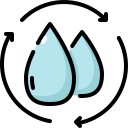“Coffee and Tea Dehydrate You” — Not Quite
Light to moderate coffee or tea generally hydrates, especially for habitual drinkers with tolerance. Watch added sugars and remember balance. What’s your go-to brew, and how does it affect your energy and focus through the morning?
“Coffee and Tea Dehydrate You” — Not Quite
Unsweetened tea, diluted cold brew, and herbal infusions count toward fluid intake. Add milk for extra electrolytes and protein if it suits you. Comment with your preferred ratio or infusion that keeps afternoons productive.


